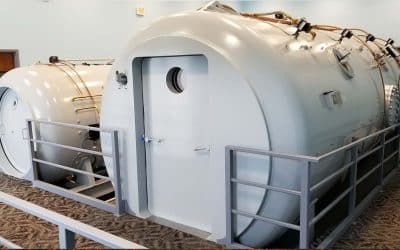Abstract Objective: As life expectancy increases, the incidence of degenerative diseases such as osteoarthritis also increases. Dynamic balance is one of the essential factors that affect the mobility and daily living activity of patients suffering from knee...
Osteoarthritis
Glutathione as a mediator of cartilage oxidative stress resistance and resilience during aging and osteoarthritis
Abstract Purpose: An underlying cause of osteoarthritis (OA) is the inability of chondrocytes to maintain homeostasis in response to changing stress conditions. The purpose of this article was to review and experimentally evaluate oxidative stress resistance and...
The Basics of Osteoarthritis
Arthritis is a general term that means inflammation of the joints. Osteoarthritis, commonly known as wear and tear arthritis, is the most common type of arthritis. It is associated with a breakdown of cartilage in joints and can occur in almost any joint in the body....
Osteoarthritis
Fast Facts Though some of the joint changes are irreversible, most patients will not need joint replacement surgery. OA symptoms (what you feel) can vary greatly among patients. A rheumatologist can detect arthritis and prescribe the proper treatment. The goal of...
Pain improvement in rheumatoid arthritis with hyperbaric oxygen: report of three cases.
Abstract: Rheumatoid arthritis (RA) is a chronic, erosive, symmetrical inflammatory disease that can progress to synovial destruction, severe disability and premature mortality. Immunotherapies, while beneficial, can cause significant adverse events. Three patients...
Pilot Study: Pulsed Electromagnetic Field Therapy (PEMFT) Alleviates Symptoms of Osteoarthritis
Abstract This study was designed to determine whether pulsed electromagnetic field therapy (PEMFT) could alleviate common symptoms of arthritis such as pain, swelling and immobility and whether it could contribute to overall wellbeing. Five volunteers, all of whom...
Case report: intestinal pneumatosis
To present a recent to increase understanding, diagnosis and treatment of intestinal pneumatosis clinical case, considering the distinctive characteristics of the disease and to expand knowledge about the management of this condition. The case of a female patient aged 65, originally from Bolivia, with a history of osteoarthritis, osteoporosis, asthma and allergies repetition occurs. The patient was admitted to the Department of Surgery No. 1 HNC in November 2015, with an unclear clinical picture. During admission of air bubbles present in the colonic mucosa and tumor lesion is discovered duodenum. Quickly it begins with treatment and adequate support for stabilization. A literature search and an update of the latest updates regarding this disease arises. medical seekers popularity as PUBMED, UP TO DATE, VBS were used. a series of articles about it were selected.
Hyperbaric oxygen protects mandibular condylar chondrocytes from interleukin-1β-induced apoptosis via the PI3K/AKT signaling pathway
Objectives: Mandibular condylar chondrocyte apoptosis is mainly responsible for the development and progression of temporomandibular joint osteoarthritis (TMJ-OA). Interleukin-1β (IL-1β) generally serves an agent that induces chondrocyte apoptosis. Hyperbaric oxygen (HBO) treatment increases proteoglycan synthesis in vivo. We explore the protective effect of HBO on IL-1β-induced mandibular condylar chondrocyte apoptosis in rats and the potential molecular mechanisms. Methods: Chondrocytes were isolated from the TMJ of 3-4-week old Sprague-Dawley rats. The Cell Counting Kit-8 (CCK-8) assay was used to determine cell viability. The phosphorylated phosphoinositide-3 kinase (p-PI3K), phosphorylated AKT (p-Akt), type II collagen (COL2), and aggrecan (AGG) content was detected by immunofluorescence, immunocytochemistry and western blotting. The expression of Pi3k, Akt, Col2 and Agg mRNA was measured using real-time quantitative polymerase chain reaction (RT-qPCR). Results: HBO inhibited the cytotoxicity and apoptosis induced by IL-1β (10 ng/mL) in the mandibular condylar chondrocytes. HBO also decreased the IL-1β activity that decreased p-PI3K and p-AKT levels, and increased COL2 and AGG expression, with the net effect of suppressing extracellular matrix degradation. Conclusions: These data suggest that HBO may protect mandibular condylar chondrocytes against IL-1β-induced apoptosis via the PI3K/AKT signaling pathway, and that it may promote the expression of mandibular condylar chondrocyte extracellular matrix through the PI3K/AKT signaling pathway.
Rehabilitation of the patients with osteoarthritis.
Under the term “osteoarthritis” (OA) is currently meant a clinical syndrome resulting from the combined effect of articular pain and disordered functional activity leading to the deterioration of the quality of life of the patients. The principal objective of rehabilitation of the patients presenting with GA in which all patients with this condition are in need practically after each next aggravation of the pathological process is to relive pain syndrome and restore the functional ability of the joints lost or deteriorated after each exacerbation in order to eventually improve the quality of life of the patients experiencing the constantly progressing degenerative process in the musculoskeletal system.









